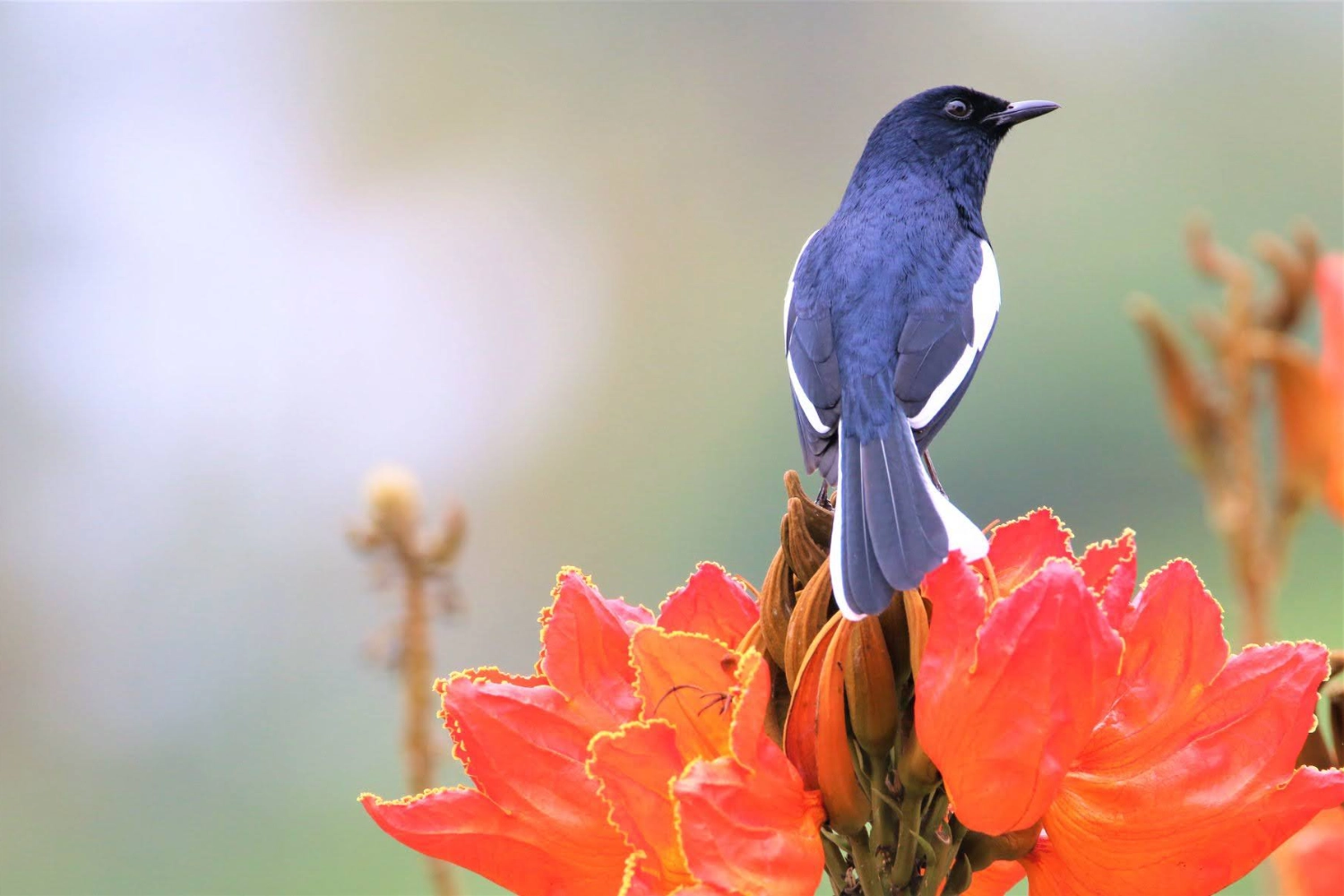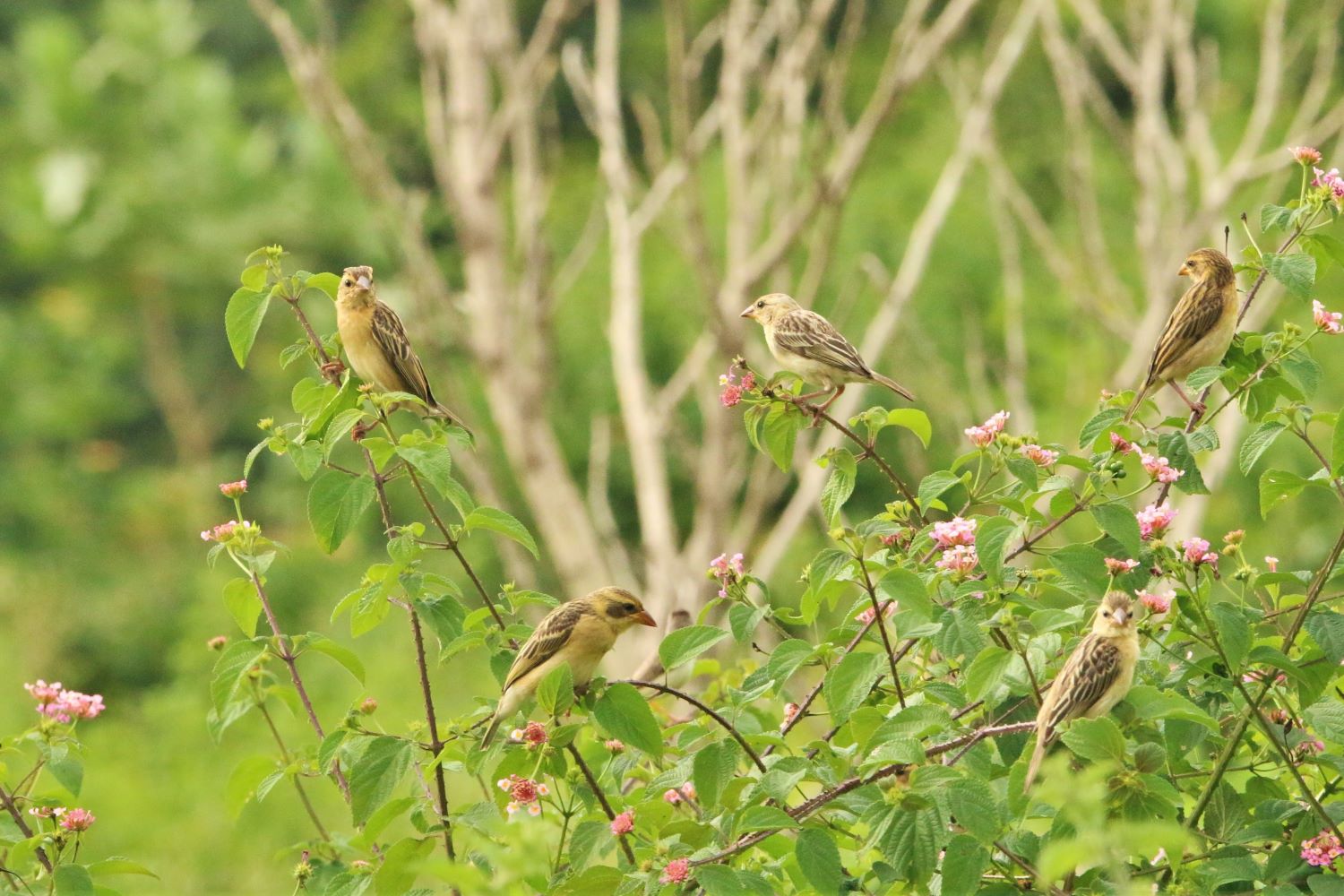Winged Wonders
Discovering the birds of Malhar
In our fast-paced lives, how often do we stop and truly appreciate the gentle harmonies of nature that surround us? The melodious chirping of birds greeting the dawn, their dazzling displays of colour, and the sheer variety of these avian wonders often become fleeting moments of beauty, quickly replaced by the next pressing thought or task.
Nature, in all its glory – from the birds in the sky, the trees anchoring the earth, to the tiny insects that work tirelessly – bestows upon us countless gifts. Yet, more often than not, these treasures remain in the background, their significant roles in ensuring our well-being overlooked amidst our bustling routines.
Envisioned with deep reverence for nature, the Malhar Eco-Village stands as a beacon of harmonious living. It has been meticulously designed and developed to ensure that humans can coexist seamlessly with the myriad wonders of nature. As Malhar’s rich tapestry of flora and fauna thrives, it becomes imperative for us to not only appreciate these invaluable inhabitants but also truly understand their roles in our ecosystem. By doing so, we can pass on invaluable lessons to our children: the importance of respecting, caring for, and nurturing every aspect of nature.
Birds of Malhar
Birds, often heralded as indicators of a healthy ecosystem, play a pivotal role in the overall ecology. They aid in pollination, seed dispersal, insect control, and maintaining a balance within the food chain. In this carefully designed ecosystem, the presence of birds is not just a pleasing sight but a fundamental building block of a thriving environment.
The significance of having birds within the neighbourhood cannot be overstated. As symbols of biodiversity, their presence signifies the health of an environment and its ability to support various life forms. They serve as ambassadors of nature’s delicate balance, bridging the gap between the built environment and the wilderness that surrounds it.
Amidst the lush landscapes of Malhar, every tree, shrub, and waterbody holds stories of interdependence and harmony, serving as gentle reminders for us to look closer, to listen, and to understand. Thus, through this series, we introduce you to some of the remarkable avian residents that have found their home within the eco-village. Let us embark on this exploration together, recognising and celebrating the myriad ways in which these birds enrich our lives.
The Oriental Magpie-Robin: Melodic Maestro

Photographs: Manmath Acharjya & Bidisha Ganguly, Residents of Malhar.

As you leisurely stroll through the Malhar Eco-Village, you may be treated to a fleeting glimpse of the Oriental Magpie-Robin, adorned in its natural dark blue-black and white tuxedo, its tail upright as it forages gracefully on the ground. Yet, what truly captures the heart is not just its visual elegance but the enchanting symphony that emanates from this remarkable bird.
Unlike many of its feathered counterparts, this medium sized robin (~19cm) reveals itself as a virtuoso mimic. Picture a bird that effortlessly emulates not only the calls of fellow avians but also mimics the ambient sounds of daily life. It becomes a living symphony, seamlessly blending the rustling leaves, distant calls, and even the hum of human activity into its melodious repertoire. The bird’s vocal range spans a broad spectrum of notes and trills, each serving a distinct purpose in the intricate dance of communication. Whether beckoning potential mates or delineating territories, its singing becomes a multi-faceted expression that transcends the conventional boundaries of mere bird calls.
Interestingly, it is this very virtue for which the Oriental Magpie-Robin, a common sight in Southeast Asia and across the Indian subcontinent, was once popular as a cage bird. These birds were among the top three common garden birds in the 1920s. However, by the late 1970s, magpie robin populations became virtually extinct in Singapore and were only seen on some offshore islands due to illegal trapping for the pet trade. Fortunately, conservation efforts and legal protections have since allowed their populations to rebound, and today, the Oriental Magpie-Robin is once again a common and thriving bird in the urban grasslands and gardens.

Breeding Season: March to July in India
During the breeding season, male magpie-robins undergo a remarkable transformation. Exhibiting a newfound hostility, they fiercely defend their territory against intruders. The males respond vigorously to the songs of trespassers and even react to their own reflections. Nest protection becomes a priority, and studies of their bird song reveal distinct dialects with neighbouring robins differing in their tunes. In this season, males elevate their voices, singing loudly from the tops of trees or other elevated perches.
Nesting spots: Thick shrubs, palm trees, hollow trees, forks of branches, human habitation
Magpie robins are versatile nest builders, crafting their homes almost anywhere. From thick shrubs and palm trees to hollows and forks of branches, these birds display adaptability in choosing nesting spots. Surprisingly, they can even nest in close proximity to human habitation, utilising spaces like patios, holes in walls, old tin cans, and reservoirs.
The nests of magpie robins are large, shallow, and loosely composed, these nests are crafted from a mix of natural materials – grass, dried leaves, twigs, roots, and moss.
Doyel: The National Pride of Bangladesh
This remarkable bird holds a special place in the heart of Bangladesh, where it is proudly designated as the national bird. Known as “Doyel” or “Doel,” it extends its significance beyond the realms of nature, making appearances on the country’s currency notes.

Ecological Importance

Photographs: Manmath Acharjya & Bidisha Ganguly, Residents of Malhar.
-
Insect Population Control: It is an avid insectivore, preying on a variety of insects, including beetles, caterpillars, and spiders. By actively foraging for insects, it helps control pest populations, contributing to the overall health of the ecosystem.
-
Seed Dispersal: While primarily insectivorous, they also consume fruits, and thus participate in seed dispersal contributing to the regeneration of plant life.
-
Pollination Assistance: While not primary pollinators, magpie-robins may play a role in pollination by transferring pollen as they move from flower to flower in search of nectar.
-
Ecosystem Resilience: The adaptability of magpie robins to various nesting locations, including human-inhabited areas, reflects their ability to coexist with changing landscapes. This adaptability is crucial in the face of changing landscapes and urbanisation.
In essence, the Oriental Magpie-Robin, with its melodic prowess and adaptability, emerges not only as a fascinating creature in the natural symphony of the Malhar Eco-Village but also as a vital contributor to the ecological balance. From its remarkable mimicry to its versatile nesting habits, this bird exemplifies resilience in the face of changing landscapes.
iNaturalist is an American 501(c)(3) nonprofit social network of naturalists, citizen scientists, and biologists built on the concept of mapping and sharing observations of biodiversity across the globe.
If you’ve enjoyed discovering the enchanting world of the Oriental Magpie-Robin, you won’t want to miss our first bird in the series—the Baya Weaver.



Leave A Comment